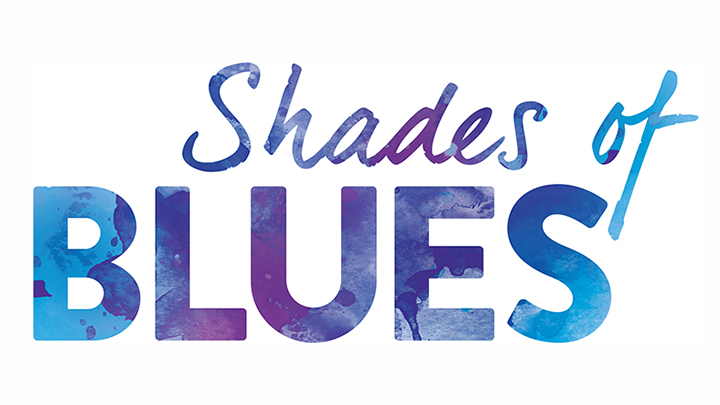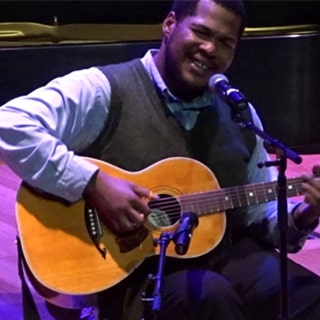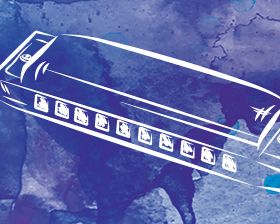By Elijah Wald
Blues has meant many different things over the years, and its history—like the history of any musical genre—is as much the story of those evolving meanings as it is of an evolving musical style. In the beginning, the word just meant sorrow or depression, and thousands of songs have continued to use it that way: “I’ve got the blues, I can’t be satisfied,” or “Hear that lonesome whippoorwill, he sounds too blue to cry.” But sometime around the first decade of the 20th century it also came to be used for a kind of music.
Music Starts to Get the Blues
We don’t know what kind of music, exactly, was first called blues. Ma Rainey and Bessie Smith were singing slow, sad songs about their troubles in love and life by 1910 or thereabouts, but no one seems to have called them blues singers until the late teens—and by that time blues had already come and gone as a hot dance craze, played by brass bands and ragtime orchestras, and been supplanted by jazz. In 1915, the first newspaper article to mention jazz as a musical style was headlined “Blues Is Jazz and Jazz Is Blues,” which makes perfect sense if you look at how many early jazz bands relied on the basic 12-bar blues form. But there was also a lot of blues that was not jazz, and some jazz that was not blues.
A century later, it is even harder to sort out what “blues” means—or, more to the point, what it doesn’t mean. We often hear that blues is the root of all American music, from country to rock to rap, and it doesn’t stop there—the haunting music of northern Mali is frequently described as “African blues;” rembetika, fado, and flamenco are described as Greek, Portuguese, and Spanish blues, respectively; and enka is described as Japanese blues. For many people, blues continues to denote emotion and is a catch-all term for any music that feels soulful. That might serve as a good general definition, except that the most popular blues style in the United States is a rowdy, bar-band sound featuring fast tempos and screaming electric guitar solos.
Race & Blues
Then there is the issue of race. The earliest blues songs were specifically recognized as African American, and many fans continue to think of blues as essentially black music—some will even argue that a blues feel is what marks any musical style as black and might paraphrase that old headline as “Blues Is Black and Black Is Blues.” The list of white artists who have made blues the foundation of their styles runs from Jimmie Rodgers and Hank Williams through Elvis Presley and the Rolling Stones to Jack White, but all have credited African American predecessors as influences and inspirations. But anyone exploring the modern blues scene has to face the fact that at most blues events in the 21st century, the vast majority of audience members and players are white.
My first blues heroes were African American acoustic guitar players, people like Josh White and Mississippi John Hurt, and I have spent most of my life playing their music and writing about it, trying to keep that tradition alive while extending my interests to include later artists, from T-Bone Walker and Dinah Washington to electric innovators like Jimi Hendrix and soul-blues singers like Denise LaSalle. I traveled to New Orleans, Texas, Los Angeles, Chicago, and the Delta searching out clubs where I could hear the “real” blues—by which I mean the older styles I loved, played by old African American men and women for audiences of their peers—but I have also enjoyed a lot of fine performances by white, Asian, European, Native American and Latino artists.
Some of those artists called themselves blues musicians; others preferred to be known as rockers, folksingers, soul singers, jazz players, or just “musicians”—many performers consider genre labels limiting and prefer not be categorized or have their work put in a particular box. That is particularly true of genre labels that do not appeal to a broad range of listeners. When blues was the mainstream of black popular music in the 1920s, songs got labeled “blues” because that was the hot marketing term of the moment, though by today’s standards they sound nothing like blues. In later eras, when blues had fallen out of the pop mainstream, forward-looking artists like James Brown said they didn’t even like blues—though Brown’s defining hit, “Papa’s Got a Brand New Bag,” is a textbook example of the 12-bar form.
James Brown “Papa’s Got A Brand New Bag”
Blues Today
So, taking all those changes and disagreements into account, what can we say about the state of blues today? There are many answers, but I can only give the ones that seem particularly relevant to me. One is that the great music of the past is more available than ever before—thanks to the Internet, modern fans can hear recordings and watch videos by the finest performers of previous eras, and some young artists have used those tools to learn classic styles and connect with peers who share their tastes. These new artists have included a wave of young African American musicians—such as Corey Harris, the Carolina Chocolate Drops (including former members Rhiannon Giddens and Dom Flemons), and the virtuoso multi-instrumentalist Jerron “Blind Boy” Paxton—who are connecting blues to country, ragtime, jazz, and contemporary pop and alternative styles.
The other answer I’d give is that the same communities and traditions that produced blues a century ago are still producing a wealth of new music. From small neighborhood clubs to stadium stages—and the virtual stages of the Internet—the cultural heirs of Robert Johnson and Bessie Smith are reaching larger audiences than ever before. Whether you prefer the arching vocals of Beyoncé, the raw humor of Lil Wayne, the intricacies of Kanye West, or the dance beats underpinning a million parties, there is a lot of exciting music being made, and if I want to make a case for the continuing power and importance of blues, that’s a good place to start.
About the Author
Elijah Wald is an author, journalist and guitarist who has had more than 1,000 articles published during his time as world music writer for the Boston Globe. His dozen previous books include Escaping the Delta: Robert Johnson and the Invention of the Blues; How the Beatles Destroyed Rock ’n’ Roll: An Alternative History of American Popular Music; Narcocorrido: A Journey into the Music of Drugs, Guns, and Guerrillas; and The Mayor of MacDougal Street, a memoir with Dave Van Ronk that inspired the Coen Brothers’ movie Inside Llewyn Davis. He has an interdisciplinary PhD in ethnomusicology and sociolinguistics, and taught for several years in the musicology department at UCLA. Check out his 2016 book, Dylan Goes Electric!, described as “a great work of scholarship, brimming with insight – among the best music books I have ever read” by John Harris, The Guardian newspaper.


